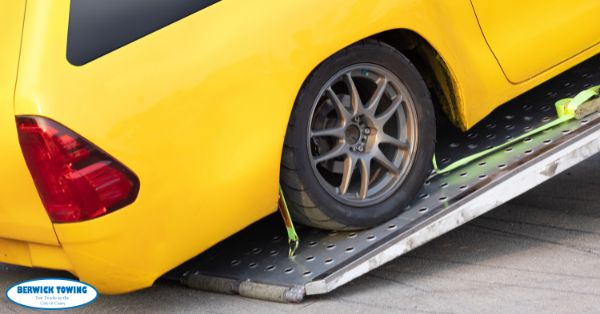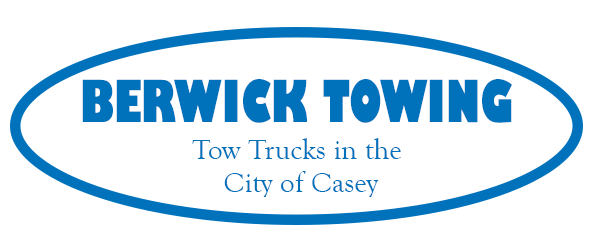The Different Uses for Types of Towing
Most tow trucks you’ll see are owned by private companies. Others will be registered with government bodies like local or state authorities. These can include first responders like fire services, police departments, or roadworks.
Helping stranded motorists who’ve suffered an accident or breakdown is one of the tow truck’s primary roles. Removing the vehicle to a safe spot helps prevent further damage and protect other motorists. This is just one of the services tow trucks perform.
You’ll also see them used to haul heavy-duty cargo, which may or may not be another vehicle that hasn’t been compromised in any way; it just needs a secure and strong set of wheels to carry it somewhere. Machinery and equipment are also commonly transported this way.
There is a reason for towing no motorist wants to experience: being towed away for an offense! Committing a parking violation, blocking a traffic lane, or not paying your auto insurance could see you hitched up for a ride to the impound yard.
Nobody likes to think about that, right? Let’s instead learn more about the various types of towing trucks and explore their pros and cons.
The Flatbed Tow Truck
The most common of all towing types deserves its own section. Flatbeds are also called “rollbacks” or “slides” and are small, maneuverable workhorses ideally suited to short hauls. They can handle single or multiple vehicles from lightweight to heavy-duty and deliver them to locations bigger trucks would have a much harder time navigating.
These models have a long (you guessed it) flatbed that vehicles can be driven onto. They can alternatively be winched up into position before being fixed in place for transit if the vehicle has been rendered immobile by mechanical failure or accident. You’re also getting a safer experience if your vehicle is the only one on a flatbed since there won’t be any other ones to scrape, scratch, or drip on it!
Flatbeds come in three additional designs that do a little bit more than the conventional kind. Step decks have ramps for easier loading and offloading and sit lower to the ground to accommodate tall cargo. Removable goosenecks can transport longer-than-average loads and have a detachable front that turns the trailer into a ramp. Double drops combine the merits of the previous two designs to carry both long and tall loads.
You’re now familiar with the rock star of towing! Now let us introduce you to some other towing types you’ll see on the road.
The 4 Other Main Types of Towing
We’ll now spotlight some of the other tow truck models that are most commonly used. These range from old designs that these days are reserved for just one type of job to more technically advanced designs.
1. Hook and Chain Tow Trucks
These models are the ancestors of the other towing types. They’ve fallen out of favor over the years due to the harsh simplicity of their design. A large, heavy hook at the end of a chain is attached to the vehicle needing to be towed via the axle or bumper to pull it to its destination.
A boom is used to lift either the front or rear wheels of the towed vehicle while the remaining pair stay in contact with the road. Hook and chains can cause damage by harming bumpers, axles, and drivetrains or leave big scratches in the paintwork since the chain must be wrapped around the car’s frame.
The upside? There isn’t really one these days, unless the truck is being used to haul other cargo or transporting vehicles for junking.
2. Wheel-Lift Tow Trucks
A similar yet safer alternative to hook and chain. The towed vehicle has its front or rear tires clamped into a yoke attached beneath the drive wheels before being partially lifted off the road. This puts much less stress on the vehicle.
Wheel lifts are also smaller and have a lower height profile than flatbeds. This means they’re more maneuverable in tight spots and through areas with low clearance since the towed vehicle isn’t elevated very much.
3. Boom Tow Trucks
“Boom” refers to this tow truck’s hydraulic arm, which is mounted on the chassis. The boom works in tandem with a winch and either a belt lift or sling to get vehicles out of trouble. Some booms can swivel while others are in a fixed position, making these trucks among the more versatile towing types.
Those that can swing are also called “rotators,” which can be very helpful when working at awkward angles, in rough weather, or with heavy loads.
How much weight can be handled and how maneuverable the boom is will vary from truck to truck. The best towing companies will either have a selection of booms for different-sized jobs, or they’ll have one heavy-duty rig that can handle big loads as well as smaller hauls.
4. Integrated Tow Trucks
These interior control models are sometimes called “self-loaders” since the driver rarely needs to leave their cab to get vehicles attached. Integrated trucks are incredibly sturdy, stable, and can pull some heavy loads. This is due to their combination of multiple mechanisms and designs. Integrated tow trucks have extra axles and typically combine elements of a wheel lift and a boom into one vehicle.
Choosing appropriately between types of towing can make it easier to get your vehicle where it needs to be. Choosing poorly can make the process a real drag, so here are some things to consider regarding the problems of different towing methods.
Drawbacks of the Various Types of Towing
Don’t be in too much of a hurry to accept any towing vehicle that turns up! You may be desperate to get out of a fix, but the wrong decision can make a bad situation worse. Therefore, you must tell the towing team everything you can over the phone before they arrive. Make a note of the following issues:
- Both wheel-lifts and hook and chains have the drawback of one set of the towed vehicle’s wheels always being in contact with the road. This can add a little wear and tear, especially if the contacting wheels are locked. This is avoided with flatbeds because the towed vehicle is fully elevated.
- Four-wheel drive vehicles can’t be towed using hook and chain or boom tow trucks due to elevated risk to the drivetrain.
- Using the wrong boom truck for the job can have disastrous consequences. Misjudging the load could cause the tow truck to tip over and/or drop the vehicle.
- A larger boom capacity than necessary for the job isn’t always a good thing. Some vehicles will require smaller rigs because it will put less stress on them. Choose a company experienced in light and heavy-duty towing.
- Flatbed transport must be carried out very securely. There are no walls to stop a vehicle from falling off otherwise. Safety and success depend on experienced and responsible drivers.
Knowing how to choose the right auto transport company can help you discern between towing types and avoid unnecessary problems. You can do that by checking that they’re licensed, insured, and have a good rate of courteous response to customer queries and feedback.
Affordable Towing Services Company in Melbourne South Eastern Suburbs.
Berwick Towing & Transport located near the Dingley Village, Victoria 3172 Please check below map.
Berwick Towing & Transport
27B William Rd
Berwick VIC 3806
https://berwick-towing.com.au/
* Find us on Google Map

